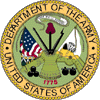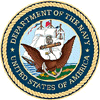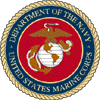Do Military Command Information Newspapers Meet State Goals and Objectives They Claim to Advocate?
| Department
of Defense |
| Joint
Course in Communication |
| University
of Oklahoma -- Class 03A2 |
 |  |  |  |
Table of Contents:
| |||||||||||
| Authors: |
| Jessica
Bailey, U. S. Navy |
| Marisol
Cantu, U. S. Marine Corps |
| Sharon
Chan, U. S. Navy |
| Masao
Doi, U. S. Air Force Civilian |
|
Robert
Whetstone, U. S. Army |
This website was constructed as part of a research project under the auspices of the University of Oklahoma. It does not necessarily reflect the views or policies of the Department of Defense.
| This
Capstone project made an initial attempt at determining whether
or not military newspapers meet the objectives they advocate.
The researchers used the Tinker Take Off as a baseline to draw
conclusions about whether certain independent variables have an
impact on the objectives. The researchers do not know to what
extent the findings from a readership survey conducted on the
Take Off compares to surveys conducted on U.S. military newspapers
worldwide. Furthermore, the researchers do not know whether the
questions posed in the survey measure the variables (objectives)
the Tinker public affairs office sought to measure or whether
the grouping of questions to measure for the variables accurately
measure the |
|
|
|
|
|
|
|
|
|
|